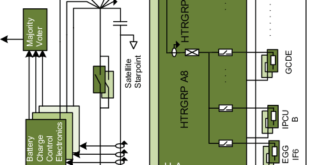Constellations of satellites are being proposed in large numbers; most of them are expected to be in orbit within the next decade. They will provide communication to unserved and underserved communities, enable global monitoring of Earth and enhance space observation. In a Low Earth Orbit (LEO), a satellite completes about …
Read More »New Ground segment innovations to support “New Space” revolution
Space is becoming more dynamic than ever with mega-constellations, multi-orbit satellites, and software-defined payloads. The world’s demand for broadband connectivity has created a new generation of high-throughput satellites in geosynchronous Earth orbit (GEO), medium Earth orbit (MEO), and now low Earth orbit (LEO). In the future, 5G networks will …
Read More »Millimeter or AEHF Satellites technology
Substantially more spectrum bandwidth is available at the Ka band than at the Ku band and other lower frequencies. For example, Ku band allocation is around 2GHz for uplink and 1.3GHz for downlink with actual contiguous bandwidth allocation of less than 0.5GHz per satellite. In comparison, the Ka band SATCOM …
Read More »Satellite Remote Sensing
Remote sensing is the science of acquiring information about the Earth’s surface without actually being in contact with it. This is done by sensing and recording reflected or emitted energy and processing, analyzing, and applying that information. Some examples of remote sensing are special cameras on satellites and airplanes taking …
Read More »High gain Antennas including Membrane reflectarray antennas on Small Satellites / Cubesats enable High resolution SmallSat SAR/SIGINT and high capacity communications missions
The small satellite is one of the fast growing sectors in space industries. Small satellites usually refer to satellites below 500 kg, including minisatellite (100–500 kg), microsatellite (10–100 kg), nanosatellite (1–10 kg), picosatellite (0.1–1 kg), and femtosatellite (<0.1 kg). Cube Satellites, aka CubeSats, are a class of nano satellites …
Read More »High Altitude Platforms (HAPs), for communications and persistent, wide area, real time Intelligence, Surveillance, and Reconnaissance (ISR)
The constant growth of interest in high-speed wireless communications causes the search for new solutions and new types of radio access networks. Although more than half of the global population is already connected to the Internet, there is still a need for higher broadband connectivity and telecommunication services in suburban, …
Read More »Military Satellite Communications terminals market seeing new technologies and trends
A communications satellite is an artificial satellite that relays and amplifies radio telecommunications signals via a transponder; it creates a communication channel between a source transmitter and a receiver at different locations on Earth. The benefit of a satellite communications network lies in its ability to link users to voice, …
Read More »Space based CRISPR gene-editing to protect astronauts from radiation damage of Deep-space missionss
Deep-space and long-duration missions, where both crew members and spacecraft no longer benefit from the protection of Earth’s magnetic fields, are considered high risk for adverse radiation impacts. Aircraft flying at altitude, at about 30,000 feet and above, also are starting to experience radiation-induced effects. “There are 500 times more …
Read More »Roll Out Solar Array (ROSA) are flexible and lightweight solar array being tested on Satellites
The solar cells produce electrical power (current) from incident sunlight. However, individual solar cells generate very little power. So, in order to generate more power, a group of cells that are present in an array form can be used. Solar arrays are primarily used in satellites in order to provide …
Read More »Availability & Reliability of Satellite Constellation, Satellite System and Subsystems
Over the past three years, SpaceX has deployed thousands of satellites into low-Earth orbit as part of its business to beam high-speed internet service from space. But the company’s latest deployment of 49 new satellites after a Feb. 2021 launch did not go as planned. As a consequence of …
Read More » International Defense Security & Technology Your trusted Source for News, Research and Analysis
International Defense Security & Technology Your trusted Source for News, Research and Analysis






